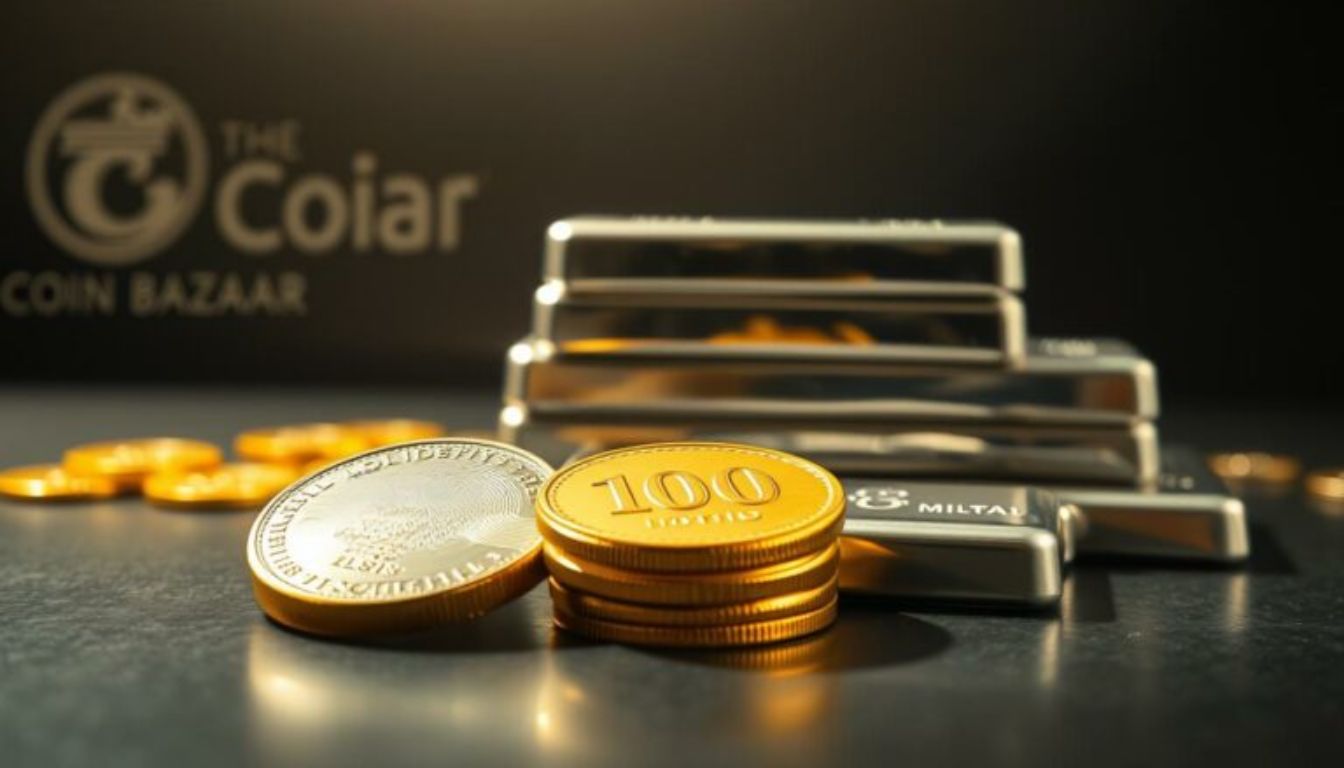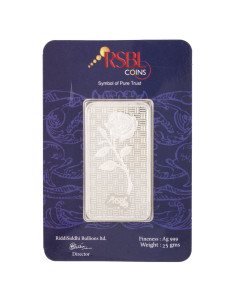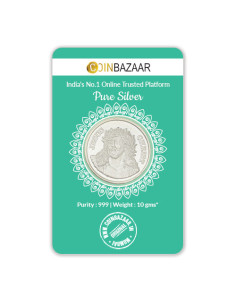Exclusive Deals & Trending Items


Muthoot Pappachan Swarnavarsham Gold Combo Oval Lakshmi Gold Pendant of (1gm each x 4 Pcs) in 999 Purity Fineness
Shop Now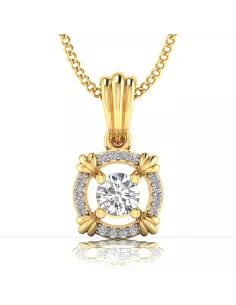

Divine Solitaires Diamond Pendant for Women 18kt Gold Sol. Diamond 0.15carats BIS Hallmark Certified
Shop NowHave you heard of the gold-silver ratio? It’s how many ounces of silver you need to buy one ounce of gold. As of May 30, 2023, this number was 84.4:1.
This number is very important for investors. It shows how much silver is worth compared to gold. Knowing the current gold silver ratio helps you make smart choices with your money.
Key Takeaways
- The gold-silver ratio shows how many ounces of silver you need to buy one ounce of gold.
- As of May 30, 2023, the ratio was 84.4:1.
- This ratio is a crucial metric for silver investors.
- It indicates the relative value of silver to gold.
- Understanding the ratio can help investors make informed decisions.
What the Gold-Silver Ratio Reveals About Markets
The gold-silver ratio shows how much silver is worth compared to gold. It’s found by dividing the gold price by the silver price. This gives us a clue about how these metals are valued.
Definition and Calculation Method
The gold-silver ratio is how many ounces of silver it takes to buy one ounce of gold. For example, if gold is $1,800 an ounce and silver is $20, the ratio is 90:1. This means you need 90 ounces of silver to get one ounce of gold.
| Gold Price (per oz) | Silver Price (per oz) | Gold-Silver Ratio |
|---|---|---|
| $1,800 | $20 | 90:1 |
| $1,500 | $15 | 100:1 |
Why Investors Track This Metric
Investors watch the gold-silver ratio to see if silver is a good deal compared to gold. If the ratio is high, it might mean silver is cheaper than gold. This could be a good time to buy. But if the ratio is low, it might mean silver is too expensive.
“The gold-silver ratio is a valuable tool for investors, helping them make informed decisions about their investments in precious metals.” –
By keeping an eye on the gold-silver ratio, investors can spot trends and chances to make money. It’s a key tool in the world of precious metals.


Analyzing the Current Gold Silver Ratio of 100:1
The gold-silver ratio has reached an astonishing 100:1. This has sparked a lot of debate among investors. It has made people question the market’s balance and the chances for investment.
Recent Market Developments
Recent events have greatly influenced the gold-silver ratio. Central banks’ monetary policies have affected gold prices. At the same time, industrial demand for silver has impacted its price. The ratio has also been influenced by investor sentiment and market speculation.
To understand the recent trends, let’s examine the data:
| Commodity | Price (USD) | Change (%) |
|---|---|---|
| Gold (oz) | 1800 | +2% |
| Silver (oz) | 18 | -1.5% |
Factors Driving This Extreme Ratio
Several factors are behind the extreme gold-silver ratio. One key factor is the divergent demand for gold and silver. Gold is often seen as a safe-haven asset. On the other hand, silver is crucial for industrial applications, especially in renewable energy.
“The silver market is heavily influenced by its industrial demand, which can lead to price volatility compared to gold.” – Industry Expert
Another factor is the central banks’ policies, which have kept interest rates low. This has boosted gold prices. Also, supply chain disruptions have affected silver production, impacting its price.
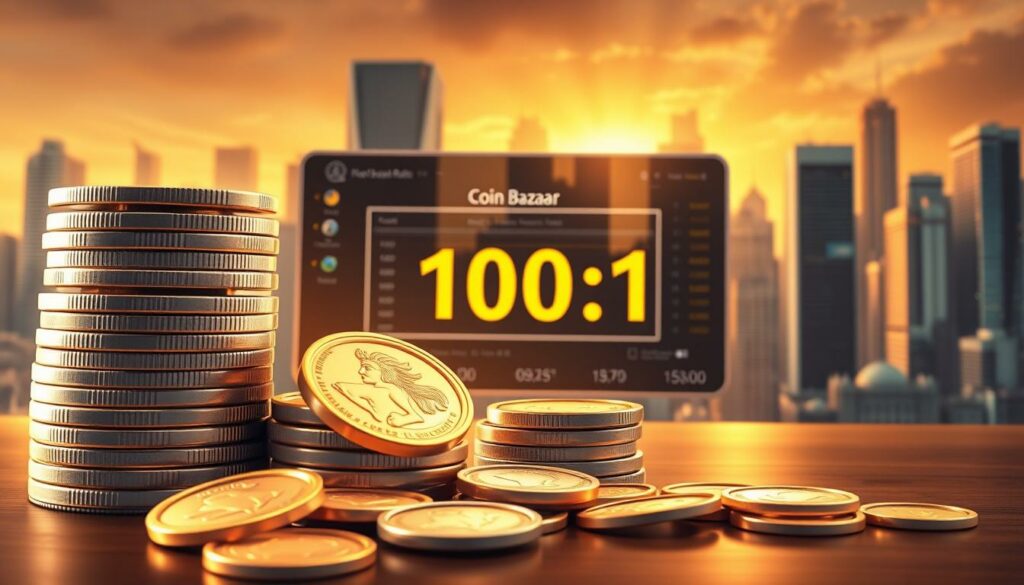

Understanding these factors is key for investors in the precious metals market. As the gold-silver ratio remains a topic of interest, staying updated on market trends is crucial. This will help investors make informed decisions.
Historical Context: How Today’s Ratio Compares
Looking at the current gold-silver ratio of 100:1, we must consider its history. This ratio, a key precious metals ratio, has changed a lot over time. It’s been shaped by many economic and social factors.
Ancient to Modern Ratio Patterns
In ancient times, the gold-silver ratio was about 12:1. This showed silver was more abundant and valuable than gold. Over the years, this ratio has changed a lot. It’s been influenced by things like changes in metal supply, new mining technologies, and shifts in demand for coins and other uses.
Previous Peaks and Recovery Patterns
There have been times when the gold-silver ratio hit very high levels. Then, it often corrected itself. For example, in the late 19th and early 20th centuries, the ratio was high. This was because of the gold standard and low silver demand.
By looking at these past trends, we can learn about the factors that affect the gold-silver ratio. This knowledge can help investors make better choices about their precious metal investments.
Understanding these historical trends helps us see what might happen in the future. It can also show us opportunities in the silver market.
Is Silver Significantly Undervalued at 100:1?
The gold-silver ratio has hit an incredible 100:1, leading to a heated discussion among investors. They wonder if silver is ready to bounce back. This high ratio suggests silver might be cheaper than gold. But what does this mean for those looking to invest?
Fundamental Analysis Perspective
Looking at the gold-silver ratio, silver seems undervalued compared to gold. The average ratio is around 60:1, but now it’s at 100:1. This big jump might mean silver is getting ready to rise in value. Experts say, “The current ratio is unsustainable in the long term, and a reversion to historical means is likely.” Investors should consider accumulating silver during such periods of high ratios.
Several factors make silver appealing at this ratio. Its use in renewable energy and electronics is growing. This demand, along with possible supply limits, could push silver prices up. As an investor, watching these trends is key.
Technical Analysis Viewpoint
From a technical standpoint, silver’s price charts offer clues about its future. Silver has been in a holding pattern, and a big move could happen soon. Tools like the Relative Strength Index (RSI) and Moving Averages help spot the best times to buy or sell silver.
As silver prices start to climb, investors need to be ready. A market expert notes, “When the gold-silver ratio is as high as 100:1, it’s a clear signal that silver is undervalued and ready for a potential surge.” Staying alert to technical signs is vital for making smart investment moves.
Mean Reversion Theory: Will Silver Prices Correct?
The mean reversion theory is a useful tool for predicting silver price movements compared to gold. It suggests that the gold-silver ratio will return to its historical average. This could lead to a price correction for silver if the ratio is too high.
To grasp the mean reversion theory’s impact, we must look at past data and possible correction times. The current gold-silver ratio of 100:1 is much higher than usual. This makes many wonder if silver is cheap and ready for a price boost.
Historical Evidence for Ratio Normalization
History shows the gold-silver ratio has changed a lot over time. Extreme ratios often normalize to around 60:1 or less. Studying these patterns can help predict future live gold silver ratio movements.
| Historical Period | Average Gold-Silver Ratio | Normalization Trend |
|---|---|---|
| Ancient Times | 12:1 | Gradual Increase |
| Modern Era | 60:1 | Fluctuating |
| Recent Years | 80:1 – 100:1 | Potential for Mean Reversion |
Potential Timeframes for Adjustment
The time it takes for the gold-silver ratio to adjust can vary a lot. It depends on market conditions, investor behavior, and the economy. Some changes happen fast, while others take years. Investors watching the live gold silver ratio can spot good times to buy or sell silver.
Grasping the mean reversion theory and its effects on silver prices is key for investors. By looking at past data and possible correction times, investors can make smarter choices in the precious metals market.
Silver Investment Strategies During High Ratios
A high gold-silver ratio offers both challenges and chances for silver investors. When the current ratio for gold and silver is high, it means silver might be cheaper than gold. This calls for smart investment choices to get the best returns.
Accumulation Strategies
During high gold-silver ratios, investors often use accumulation strategies. This includes:
- Buying silver regularly, no matter the price.
- Investing in silver when it’s cheaper than gold.
- Using dollar-cost averaging to smooth out price swings.
These methods help investors grow their silver over time. They can also lower their average cost per ounce.
Position Sizing Considerations
Effective position sizing is key when investing in silver during high ratio times. Investors should:
- Check their overall investment portfolio and risk level.
- Decide how much of their portfolio to put into silver.
- Think about spreading their precious metals between silver and gold.
By carefully sizing their positions, investors can manage risk. They can also take advantage of silver’s undervaluation.
Setting Price Targets and Exit Strategies
Setting clear price targets and exit strategies is crucial for silver investing. Investors should:
- Set specific prices to sell their silver.
- Use trailing stops to secure profits as prices go up.
- Keep reviewing and updating their exit plans based on market changes.
Having a solid exit plan helps protect profits. It also guides investors on when to sell for a profit.
Silver Investment Vehicles for Indian Investors
With the current gold-silver ratio at 100:1, you might wonder about silver investments in India. Now, Indian investors have many options to invest in silver. Each option has its own benefits and things to consider.
Physical Silver Options
You can invest in physical silver through coins, bars, or jewelry. Physical silver is something you can hold in your hand, giving you a sense of security. But, it needs proper storage and insurance to avoid theft or loss.
The advantages of physical silver include:
- No counterparty risk
- Tangible asset
- Can be used for gifting or jewelry
Some popular physical silver products include:
| Product | Purity | Weight |
|---|---|---|
| Silver Coins | 999 | 10g, 50g |
| Silver Bars | 999.9 | 100g, 1kg |
| Jewelry | 925 | Varies |
Digital and Paper Silver Investments
Digital and paper silver investments are alternatives to physical silver. They include silver ETFs, mutual funds, and digital platforms for buying and selling silver online.
The benefits of digital and paper silver investments are:
- Convenience
- No storage concerns
- Diversification
Silver Mining Stocks Available to Indian Investors
Investing in silver mining stocks is another way to get into the silver market. These stocks are listed on stock exchanges and can be traded like any other equity.
The advantages of investing in silver mining stocks include:
- Potential for higher returns
- Diversification
- Liquidity
Some prominent silver mining companies with a presence in the Indian market include:
| Company | Listing | Market Cap |
|---|---|---|
| Vedanta Ltd. | NSE, BSE | ₹1.2 lakh crore |
| Hindustan Zinc Ltd. | NSE, BSE | ₹1.5 lakh crore |
The Indian Silver Market: Unique Considerations
Exploring the Indian silver market reveals a unique blend of cultural and festival demands. Silver’s appeal in India goes beyond investment. It’s deeply rooted in cultural and traditional practices.
Cultural and Festival Demand Patterns
India’s love for silver is especially evident during festivals and weddings. Silver ornaments and utensils are common gifts during these times. Festivals like Diwali and Akshaya Tritiya see a surge in silver purchases, seen as auspicious.
Key festivals influencing silver demand:
- Diwali
- Akshaya Tritiya
- Navratri
- Weddings and other social gatherings
Domestic Price Premiums and Discounts
Silver prices in India are shaped by more than global rates. Local taxes, minting costs, and distribution margins also matter. This leads to price variations compared to global standards.
| Factor | Impact on Price |
|---|---|
| Local Taxes | Increases price |
| Minting Costs | Increases price |
| Distribution Margins | Increases price |
| Global Price Fluctuations | Directly affects domestic prices |
Import Regulations and Their Impact
India’s silver import rules can greatly affect prices and availability. It’s vital for investors to grasp these regulations.
“The government’s policies on silver imports can affect the supply chain, influencing prices and demand.” – Expert Opinion
Recent changes in import duties and regulations have significantly impacted India’s silver market.
Tax Implications for Silver Investors in India
As a silver investor in India, knowing about taxes is key to getting the most from your investments. The tax rules change based on whether you buy physical silver or digital silver like ETFs.
Physical Silver Taxation
Physical silver is seen as a capital asset. This means you’ll pay capital gains tax when you sell it. If you sell it after three years, you’ll pay 20% tax after adjusting for inflation. Selling it before three years means you’ll pay tax based on your income tax bracket.
| Holding Period | Tax Treatment | Tax Rate |
|---|---|---|
| Less than 3 years | Short-Term Capital Gains (STCG) | As per income tax slab |
| More than 3 years | Long-Term Capital Gains (LTCG) | 20% after indexation |
Digital Silver and ETF Tax Treatment
Digital silver, like silver ETFs, also faces capital gains tax. The rules are the same as for physical silver. But, always check with a tax expert for ETFs, as some might be taxed differently.
Knowing about these taxes helps you make better choices with your silver investments in India. It ensures you get the best returns and follow tax laws.
Monitoring the Current Gold Silver Ratio: Tools and Resources
To understand the precious metals market, it’s key to watch the gold-silver ratio. As an Indian investor, using reliable tools and resources is crucial. They help you make smart choices about silver investments.
The gold-silver ratio changes fast due to market factors. So, it’s important to track these changes well.
Reliable Tracking Platforms for Indian Investors
Many online platforms offer real-time gold-silver ratio data for Indian investors. These include financial news sites, commodity apps, and investment portals.
For example, Kitco and Investing.com give live gold and silver prices. Apps like Moneycontrol and Economic Times also offer real-time prices for gold and silver.
| Platform | Features | Accessibility |
|---|---|---|
| Kitco | Live gold and silver prices, historical data | Website, Mobile App |
| Investing.com | Real-time commodity prices, market analysis | Website, Mobile App |
| Moneycontrol | Live commodity prices, financial news | Website, Mobile App |
Setting Alerts and Decision Triggers
Tracking the gold-silver ratio is just the start. Setting up alerts and decision triggers can keep you ahead. Many platforms let you set alerts based on specific ratio levels.
For instance, you can get alerts when the ratio hits 100:1 or when silver prices reach a certain point. This way, you can quickly react to market shifts.
“The key to successful investing is to have a well-thought-out strategy and the discipline to stick to it.”
By using these tools and strategies, you can keep a close eye on the gold-silver ratio. This helps you make smart investment choices in the Indian market.
Industrial Demand: Silver’s Advantage Over Gold
Silver stands out in the market because of its many uses in industry. This makes it different from gold. When you think about investing in precious metals, knowing about silver’s industrial demand is key.
Silver is crucial for technology and green energy. It’s great at conducting electricity. This makes it perfect for solar panels, electronics, and more. The world’s push towards renewable energy boosts silver demand.
Technology and Green Energy Applications
Silver’s role in tech and green energy is wide and growing. It’s used in many ways, including:
- Photovoltaic cells for solar energy
- Electronics and electrical contacts
- Batteries and energy storage systems
- Medical devices and equipment
India’s Growing Industrial Silver Consumption
India’s use of silver in industry is increasing fast. This is because of its growing electronics and renewable energy sectors. As India’s economy grows, so will its need for silver.
| Industry | Silver Consumption | Growth Prospects |
|---|---|---|
| Electronics | High | Strong |
| Solar Energy | Moderate | Very Strong |
| Medical Devices | Moderate | Strong |
For investors, knowing these trends is crucial. The current ratio for gold and silver and the historical gold silver ratio are key. They help you see silver’s potential for growth.
Risk Management Essentials for Silver Investors
The gold to silver ratio is currently at 100:1. It’s vital to know how to reduce risks. As a silver investor, you must understand different strategies to handle market complexities.
Volatility Planning
Silver prices can change a lot, and having a plan is key. You might set stop-loss orders or use hedging strategies to control losses.
Portfolio Allocation Guidelines
Diversifying your portfolio is crucial for risk management. Allocate some of your investments to silver and others to spread risk. The right mix depends on your financial goals and how much risk you can take.
Hedging Strategies for Indian Investors
Indian investors can use hedging to reduce silver investment risks. Options include silver ETFs or mutual funds, or derivatives like futures and options.
By using these strategies, you can reduce losses and increase gains in the silver market.
Silver vs. Gold in Indian Investment Portfolios
If you’re an Indian investor, you might be thinking about silver versus gold for your portfolio. The gold-silver ratio of 100:1 is important for deciding how to invest in precious metals.
It’s key to understand the roles of silver and gold. Gold is often seen as a safe choice. But silver has its own benefits, like its use in industry and its potential for more volatility.
Complementary Rather Than Competitive Assets
Silver and gold are complementary assets in your portfolio, not rivals. Gold is stable and protects against inflation and market drops. Silver, with its industrial uses and lower price, can grow your investment.
Having both silver and gold in your portfolio balances your investment. It takes advantage of each metal’s strengths.
Optimal Allocation Based on Current Ratio
The current gold-silver ratio of 100:1 means you should rethink your investment mix. High ratios often mean silver is cheaper than gold, offering a good time to invest in silver.
Think about putting more of your precious metals investment in silver. But do it with a long-term view and a solid risk plan. Keep an eye on the ratio and adjust your strategy as the market changes.
Expert Forecasts on the Gold-Silver Ratio
Experts have different views on the gold-silver ratio, showing how hard it is to predict markets. Knowing these views can help you make better investment choices.
The current ratio of 100:1 has sparked a lot of debate. Some think it will go back to its usual levels. Others believe it will keep changing due to different market factors.
Indian Market Specialists’ Perspectives
Indian experts give special insights into the gold-silver ratio. They look at both local and global trends. Ramesh Damani, a famous Indian investor, says, “The gold-silver ratio is key, but it’s affected by world economics and local demand.”
Some think the ratio will get back to normal as silver demand grows. This is for industrial use and jewelry in India.
Global Analysts’ Predictions
Global analysts also share their views based on worldwide trends and economic signs. A Goldman Sachs report says the ratio might return to its usual level. This is because silver demand is rising.
But, other analysts warn that the ratio could stay high. This is if gold keeps being seen as a safe place during tough times.
Watching the price of gold and silver and the live gold silver ratio is key. It’s important to consider these expert forecasts when planning your investments.
Conclusion: Positioning Your Silver Investments in Today’s Market
You now know how important the current gold-silver ratio is for your silver investments. With the ratio at 100:1, it’s key to look at history, market trends, and expert advice. This helps you make smart choices.
The ratio suggests silver might be cheaper than it should be. This could be a good time to buy. Think about how to buy, how much to invest, and what prices to aim for to get the best results.
In India, you can invest in silver in many ways. This includes physical silver, digital silver, and stocks in silver mining companies. Knowing about taxes and keeping an eye on the gold-silver ratio with trusted tools can guide your decisions.
By keeping an eye on the gold silver ratio and staying updated on the market, you can make your silver investments work well today. Be alert and change your plans if needed to handle the silver market’s challenges.






